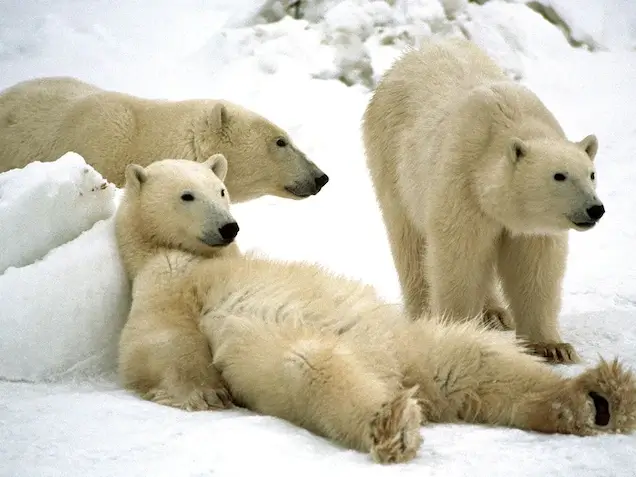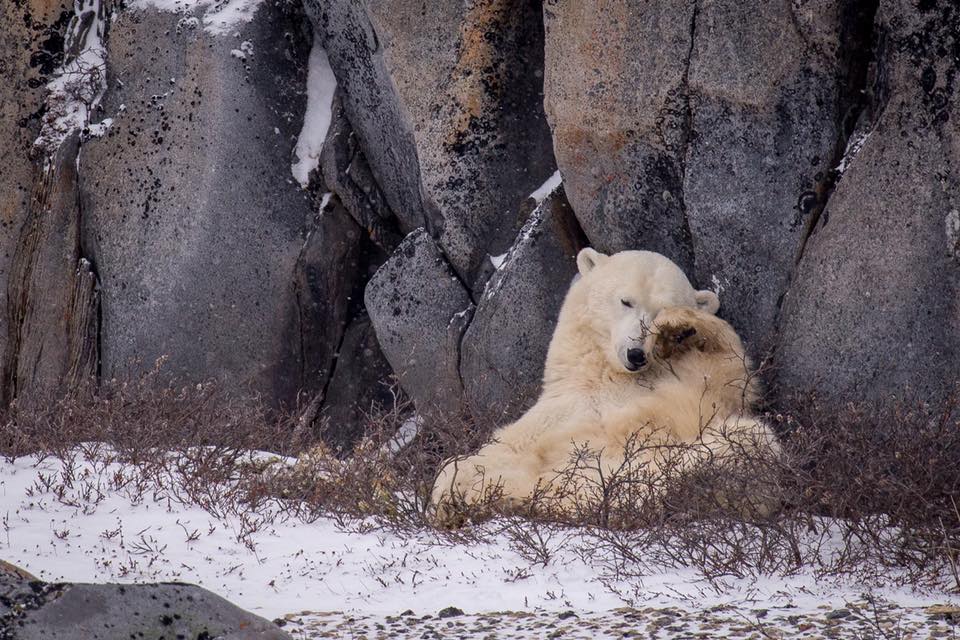Do you wish to get up and personal with a polar bear in the wild? Churchill, a little settlement on the beaches of enormous Hudson Bay in Canada’s sub-Arctic, may be your best option. From the protection of a specially built buggy, visitors may take a tour into the tundra and get up close and personal with the powerful marine creatures. However, before making a reservation, there are a few things you would want to know about the bears and the remote frontier town as well.
When and where is the greatest time to watch polar bears in Churchill?

The relatively accessible southern extremity of Hudson Bay is where Churchill is situated. While they wait for the sea to freeze so they may venture out onto the ice and engage in what polar bears do: hunt seals, the polar bears congregate here throughout the year, but notably in October and November. Due to the fresh water pouring out of Churchill River, the ice forms here quickly (freezing faster than salt water).
Where can I find Churchill?
As part of their tour, the majority of visitors take a 2.5-hour charter flight from Winnipeg, the capital of Manitoba. Churchill and the provincial capital of Manitoba are connected by train alone. It takes about two days to go the 1700 kilometers.
In Churchill, how many polar bears exist?

How many polar bears live in Hudson Bay remains a mystery due to practical difficulties (such as following the nocturnal beasts over hundreds of thousands of square kilometers in -50 degree Celsius temperatures). There are thought to be 800 to 1000 bears.
Do not anticipate hearing them before seeing them.
Animals like polar bears don’t talk much. They frequently convey their intentions through posture or body language. For instance, when polar bears want to play, they will wag their heads from side to side. A nose-to-nose welcome from another bear signifies a desire for something, but hissing, snorting, or a bowed head imply antagonism. They scream or growl when they’re furious. Fortunately, while we’re out walking with these amazing animals, our knowledgeable guides are able to decipher their signals and keep all of our guests secure.
Polar bears have character!

Depending on their life experiences, polar bears have a variety of personalities, yet they all share the same underlying essence. They are playful, curious, and highly intelligent. Because we’ve never given them a reason to be afraid of us, our shared curiosity and respect lead to uncommon interactions while walking.
They are the brown bear’s prehistoric forebears.
According to recent research, the polar bears we see today descended from a brown bear common ancestor between 350,000 and 6 million years ago. They are now perfectly prepared to endure the hostile environment they live in thanks to their evolution.
The polar bear’s body is designed specifically for the seasonal changes in the Arctic. Their ears and tails are short to prevent heat loss, their fur covers a thick layer of fat (up to 11.4 cm! ), and their paws let them to walk on thin ice.
Pregnancy can be delayed in women

The ability of polar bears to postpone the implantation of a fertilized egg is one of their most amazing traits. The embryo will only implant in the fall and only if the mother has accumulated enough fat reserves to maintain her and her cub(s) over the denning season. Mating occurs on the ice during the spring, between April and June. If the implantation goes well, she will construct a maternity den and stay there until the proud new mother emerges with her cub in late March or early April (s).
All the talk is about the keto diet.
Polar bears were first to adopt the ketogenic diet!
In one sitting, a polar bear can consume 100 pounds of blubber, and when the hunting is good, they will only consume the fat, leaving the body for scavengers. Sadly, early summer is when some of the best hunting occurs since the ice is breaking up and tiny seal pups are still learning to swim, making them easy prey.
Their fur is real and not white.

A thick, insulating coating and longer “guard” hairs are located on top of the polar bear’s fur. Because practically all heat dissipation is prevented by this dual-layer structure, adult males can easily become overheated when running. Surprise, too! They have white-looking fur, although it isn’t actually white. Each hair shaft is transparent, free of pigment, and has a hollow core that reflects and scatters light, giving it the appearance of being white.
Their feet serve a variety of functions.
Polar bears can spread their weight out and move securely across thin ice thanks to their large, up to 30 cm wide paws. Each paw’s black footpads are covered with tiny, velvety bumps called papillae. The bear’s papillae hold onto the ice and prevent it from slipping. Fur tufts between its toes and on its footpads might also add security.
Their paws are well adapted for the water as well as for icy weather. The bear uses its hind paws as rudders and its front paws as big paddles when swimming.
Polar bears have mastered good sleep habits (and quantity)

Polar bears have a lot to teach humans about getting adequate sleep. They take naps during the day and get seven to eight hours of sleep at night. This is frequently demonstrated by day beds carved out of snowbanks or tall grass surrounding our ecolodges. Polar bears typically take a nap after eating or swimming, or they may take many naps if the weather is hot or windy. If they lie down against a snowy ridge with their backs to the wind, they can sleep through a blizzard.
The Churchill Manitoba Polar Bears: 5 Ways To View Them
- Tundra Buggy Expedition Experience: Discover The Hudson Bay Shoreline Churchill Polar Bears in the Distance from a Safari Lodge
- On A Helicopter Tour, View Churchill Polar Bears from the Air
- Visit the Churchill Polar Bears with a Local Guide
- To Make Your Own Churchill, Manitoba Tour, Rent a Truck
Churchill Polar Bear Safety in Manitoba

For your protection, consider the following polar bear safety advice.
- Always stay close to your car, and keep it open and simple to get into.
- Make noise as you walk and go in groups. If they can hear you coming, polar bears will often stay away from you.
- Avoid going near coastal places with limited visibility, including the bedrock mounds.
- Use guided excursions to make sure you’re with individuals who are familiar with the wildlife and the surroundings.
- Although bears can be seen at any time of day, their peak activity hours are in the morning and at night.
- Never rush, move swiftly, or make sudden movements when you’re close to a polar bear.
- If a polar bear approaches too closely, slowly retreat back the way you came.
- STAY CALM if you catch a polar bear off guard. Never rush, hiss, yell, or otherwise attempt to frighten the animal.
- Keep your cool and move gently back the way you came if the animal displays symptoms of hostility or stalking. Alternatively, walk in a wide arc away from the animal.
- Use any available weapon if a polar bear appears to be about to charge. Make loud noises by banging, shouting, or forming a group. Avoid running. Defend your position.
- Never intervene when a mother grizzly is with her cubs. A mother bear that is separated from her cubs will probably attack to protect them.
- Don’t go exploring the town at night. particularly close to the water. In the dark, it might be challenging to spot creatures, and you risk accidentally startling a polar bear.
- Polar bears should never be approached or fed in Churchill, Manitoba.
Essential tips for seeing polar bears in Canada
7 unique places in Canada that will prove just how strange this country is
